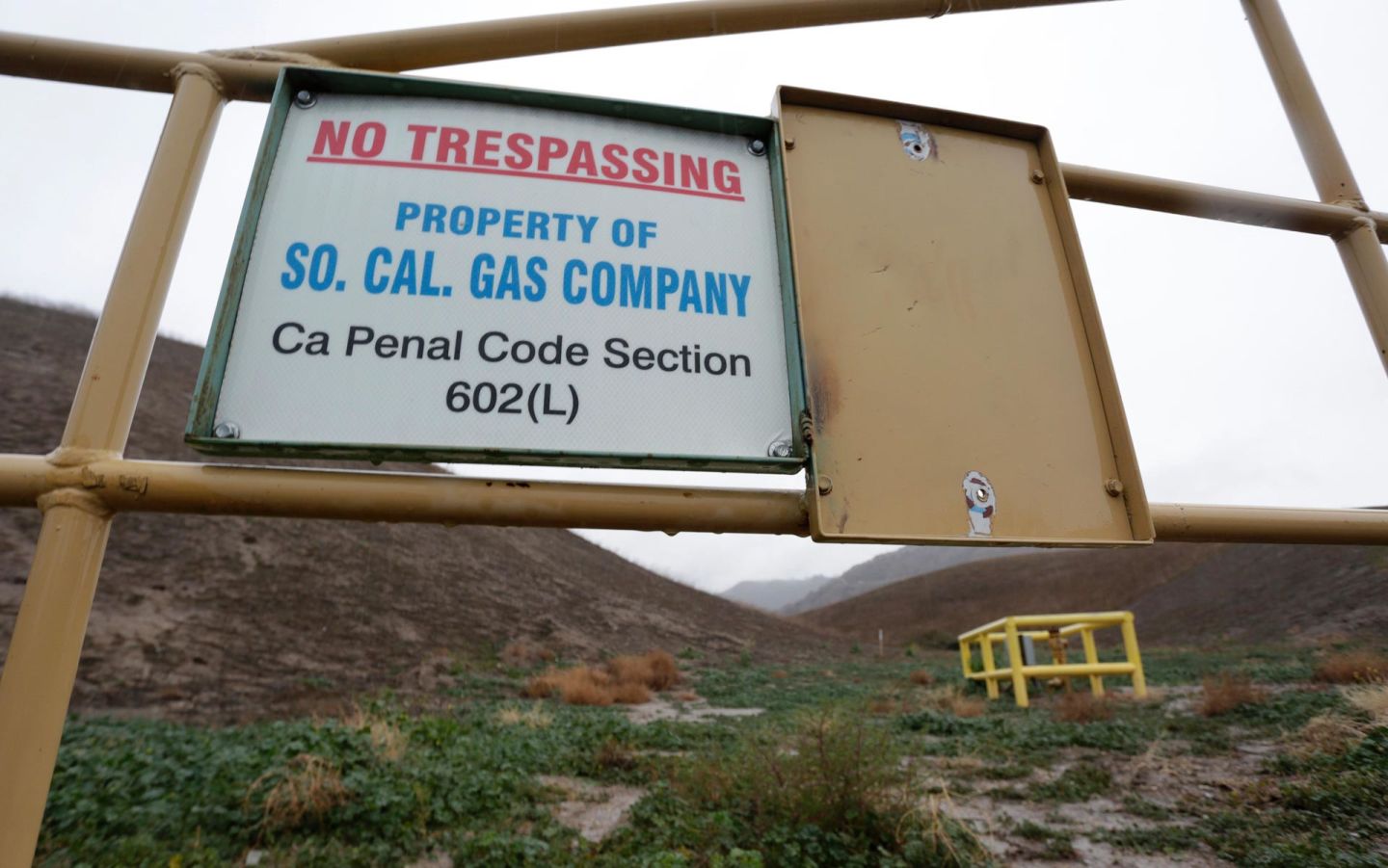California Secretary of State Alex Padilla was one of thousands of displaced San Fernando Valley residents. He, his wife and their three young children have been living in a Burbank hotel for months.
“As a father and as a husband, I appreciate when I hear from the gas company the gas leak has been fixed, but I’m gonna want a third-party validator here,” Padilla told KQED last week. “Whether it’s the air quality management district or a state agency to confirm that’s indeed the case.”
Los Angeles Mayor Eric Garcetti said he was “relieved” at the “welcome and long overdue” news that the leak was plugged.
People from the Porter Ranch neighborhood who left, many complaining of health problems, will have eight days to return home after the well is sealed under the terms of a legal settlement between Los Angeles and SoCalGas.
Six attempts to plug the well at the surface failed before the company began drilling down through rock just before Christmas. The newly completed relief well tracked a tricky route nearly a mile and a half deep in order to catch the uncontrolled well at the right depth and angle.
“Imagine if you were trying to thread a needle at the end of a football field in the dark, what a complex, challenging operation that would be," said SoCalGas spokeswoman Stephanie Donovan.
Environmental advocates have called for state agencies to order public inquiries into problems at the gas field. Maya Golden-Krasner, a lawyer with the Center for Biological Diversity, said that huge questions remain about the safety of gas operations at the site and others like it around California.
“The Brown administration’s hands-off approach to regulating gas storage has cost the people of Porter Ranch dearly,” Golden-Krasner said. “State officials still don’t really seem to get how hazardous these operations can be.”
But Gov. Jerry Brown told KQED’s Scott Shafer that he’s not dissatisfied with the government’s response to the leak.
“Things are going to go wrong,” Brown said. “And when they go wrong, they go wrong in a big way.”
The governor said that there should be more intrusive regulation, but that lowering the risk of catastrophes comes with a price tag.
“As we reduce our risk lower and lower, we will have to spend more and more money -- not on getting something new and shiny and fresh -- but just making sure the things we do don't blow up in our face,” said Brown.
Ahead are at least eight investigations into the leak, including several by public agencies into its cause and some by academic researchers into the potential health consequences of exposure to airborne chemicals.
Controlling the leak at the base of the concrete pipe in which a fissure is believed to have occurred likely preserves evidence of the failure. SoCalGas’s Donovan said the company is communicating with the California Public Utilities Commission and DOGGR about a joint inquiry led by those agencies.
“Obviously, our goal is to ensure that something like this doesn’t happen again,” she said.
An estimated 95,000 tons of methane came out of the broken well over the last several months. The Environmental Defense Fund says that will have the same impact on climate over the next 20 years as burning a billion gallons of gasoline.
